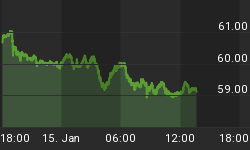A brief rundown of the commodity market in the wake of the recent correction. Commodity prices have shown some strong performance in the past week. Many individual commodities enjoyed notable gains last week, continuing the move off their recent lows.
Some of those gains were reversed on Monday, as base metals such as copper and zinc gave up some ground in a thin and volatile trading session. Nickel managed to close higher, as LME nickel inventories declined.
The Financial Times reported in their weekend edition (July 1/July 2) that the commodity sector had one of its "best first-half performances ever". So, is this outperformance the sign of a bubble, as we so frequently heard before and during the latest market correction, which hit commodities and many emerging markets worldwide?
Someone once famously remarked that we can only judge a bubble in hindsight. Assuming, for a moment, that we buy this line of reasoning, let us ask instead if the recent drop was a bull market-ending correction. Let's focus strictly on price action and take a quick look at how some of the commodities have withstood the recent market rout.
These figures are taken from the Financial Times weekend report previously mentioned. Results of trading that followed the report (and any resulting price changes) are unaccounted for.
IPE Brent Crude - up 26 percent year to date.
West Texas Intermediate crude - over 20 percent gain YTD.
Gold - up around 19 percent to date this year despite the recent $100+ drop from its peak.
Silver - up 25 percent so far this year despite correction from the $14 area.
Copper - "surged" 67 percent YTD.
Zinc - 71 percent increase in the first six months of the year.
Nickel - 58 percent gain so far this year.
This bit of information does not cover the commodity complex as a whole, but I think it serves as illustration of a simple fact: even the commodities singled out as objects of speculation are holding onto their gains in the wake of this recent market correction.
Leaving aside the larger issues of supply and demand, market psychology, and the fact that some commodity sectors have yet to enjoy their day in the sun, price action so far seems to indicate strength rather than weakness. Until the price action shows that an individual commodity, or commodities as a whole, start to weaken considerably or signal a change in trend, it would probably be premature to call an end to a bull market.
Of course, no commentary on the commodity bull market would be complete without the added news of Jim Rogers' continued bullishness. As FN Arena News reports, in a recent interview with Credit Suisse, Rogers maintained that the current bull market has a long way to go. Judging by the length of previous cycles, Rogers estimates that the current bull move in tangible assets won't peak until somewhere around 2014-2022.
We'll leave it there for now. Happy Independence Day to all readers and their families.
















